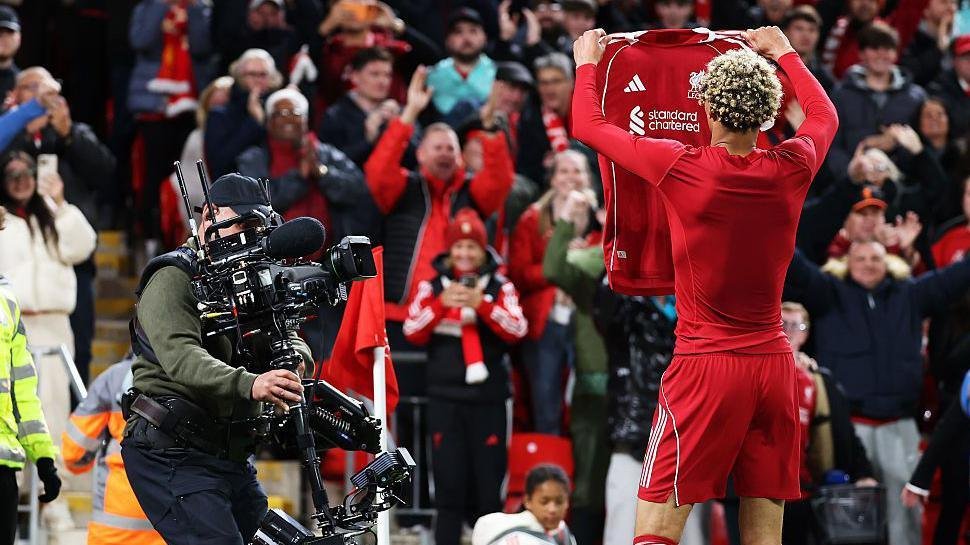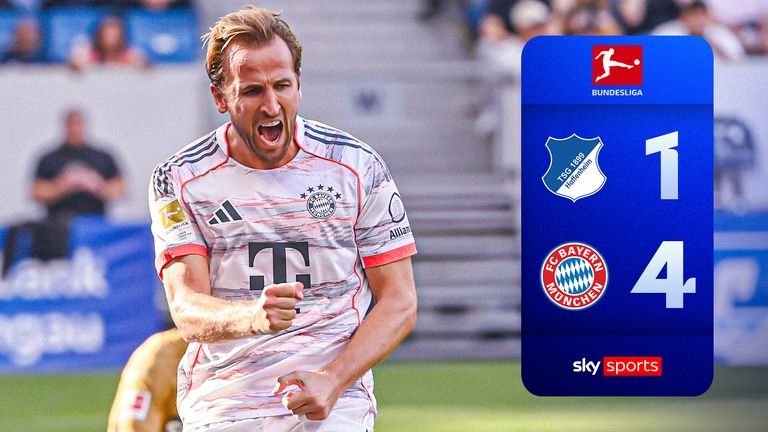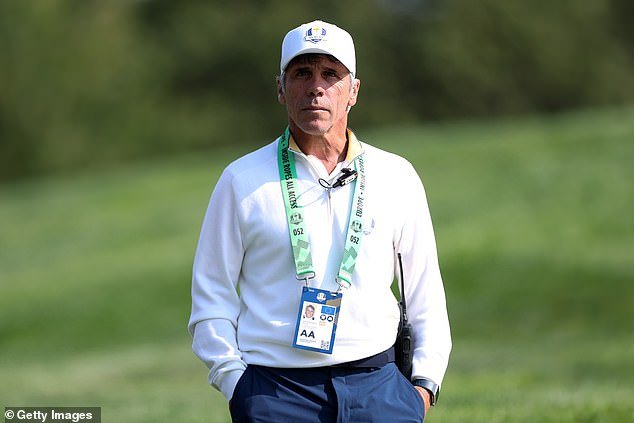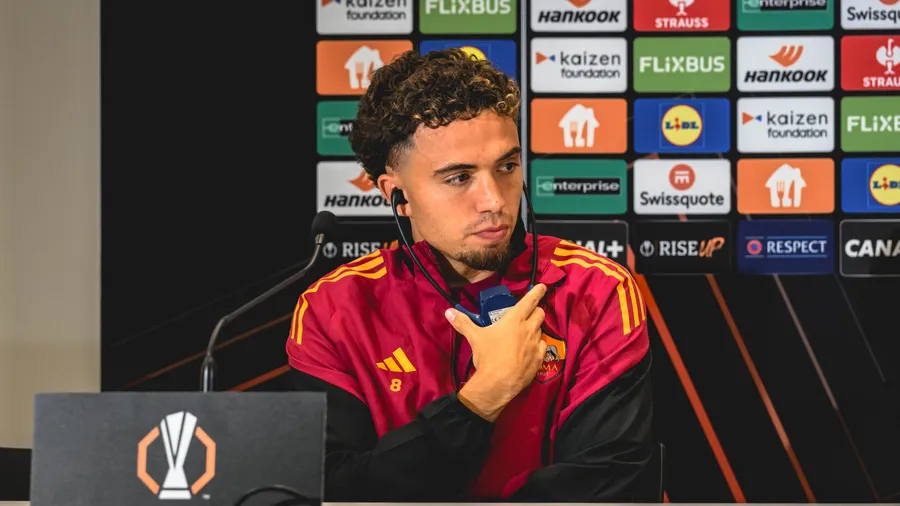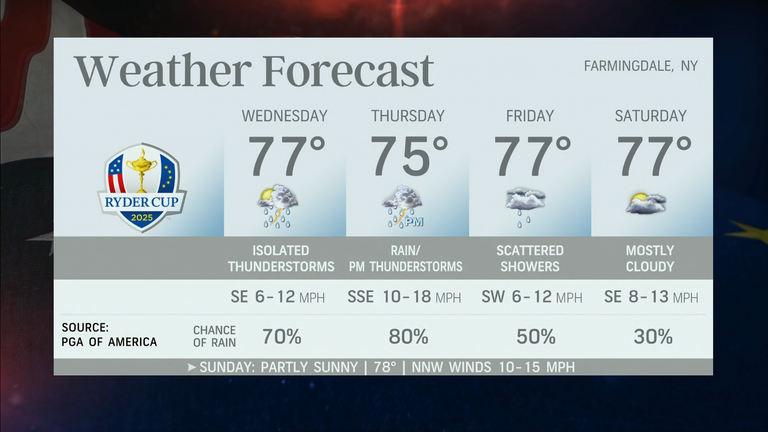At the end of a summer when Premier League clubs spent a record £3.11billion ($4.19bn) strengthening their squads, the Championship was left looking like a poor and unwanted relation.
Only 14 players moved from English football’s second tier up to the Premier League during the most recent window, down from 20 a year ago and 27 the summer before that. On top of that, three of the 14 are backup goalkeepers and four of the deals were free transfers.

Typically, the Championship has provided more players to the Premier League than any other European league, and it has often been a breeding ground for the stars of tomorrow. In the past five years, Ollie Watkins, Morgan Rogers, Djed Spence, Adam Wharton and Eberechi Eze have all gone on to make their name in the domestic top flight and play for England after signing from second-tier clubs. Go back a little further and the names of Ezri Konsa, Jarrod Bowen, Kieran Trippier and John Stones can be added to that list.
This summer, however, signalled a shift. The German Bundesliga (20 players signed), Ligue 1 in France (18) and Italy’s Serie A (15) all emerged as more attractive markets for Premier League teams, meaning only £186.5million of that £3.11bn outlay was spent in the Championship.

Not only that, but more than 75 per cent of the money paid was tied up in just four deals, and all but £20million of it ended up in the hands of Southampton, Leicester City and Ipswich Town, the three sides relegated from the Premier League at the end of last season.
Outside of that trio, Millwall and Birmingham City are the only Championship teams (Sunderland sold Tommy Watson to Brighton & Hove Albion in a deal agreed in April, before being promoted via the play-offs in May and ahead of the window officially opening in June) to have received a transfer fee from a Premier League club this summer.
So much for the strength of the English football pyramid.
So why are Premier League clubs turning their back on a source of talent that has traditionally served them so well? Do other European markets offer better value for money now? Has the standard of the Championship got worse? Is there not another Antoine Semenyo waiting to be picked up from Bristol City or elsewhere, as Bournemouth did two years ago? And is Josh Sargent really too old to move back to the Premier League at the age of 25?
The headline deals between Championship and Premier League clubs this summer featured Mateus Fernandes joining West Ham United from Southampton for £38million, Omari Hutchinson moving to Nottingham Forest from Ipswich for £37.5m, Everton signing Tyler Dibling from Southampton for an initial £35m and Chelsea paying Ipswich £30m for Liam Delap.
Crucially, all four made more than 30 appearances in the top flight last season, which goes a long way to allaying the biggest concern for Premier League clubs when buying from the Championship: can the player make the step up?
That question seems to trouble teams more than ever, fuelled in part by the narrative around the growing gulf in quality between the two divisions (the fact that all three promoted sides have been relegated in each of the past two seasons does not help in terms of the wider message that sends about the standard).
Rightly or wrongly, the perception within the game is that the level in the Championship has regressed in recent years and, at the same time, the Premier League has grown stronger.
Mind the gap, in other words.
One experienced Premier League figure who has worked in recruitment across multiple top-flight clubs, and who was speaking on condition of anonymity, talks about how there were always eight to 10 Championship players who could, in his words, “do a job” in the Premier League. “But those numbers don’t exist any more,” he says.
Some Championship fans would disagree. Coventry City’s Jack Rudoni, Jonathan Varane at Queens Park Rangers, Leicester’s Abdul Fatawu, Hayden Hackney at Middlesbrough, West Bromwich Albion’s Isaac Price, Viktor Johansson of Stoke City, Swansea City’s Ethan Galbraith and Sargent at Norwich City would probably feature on a few Premier League longlists right now. Shortlists, though, are a different matter.
It is easy to underestimate how challenging it is to cope with the speed, quality and intensity of football at the highest level or, to quote Craig Bellamy, be able to compete against the Premier League “cyborgs”.
Bellamy, the Wales head coach and former Burnley assistant manager, made some interesting comments during the recent international break about the changing face of the Premier League.
“It has become beyond extreme with the physical capabilities,” Bellamy said. “We found it with Burnley — we built a Championship team that could come out of small spaces. Then go to the Premier League: cyborgs, that’s what you’re up against. It was unreal. They just run you, but also have ridiculous ability.”
Although the emphasis on athleticism when recruiting at Premier League level is understandable, there is always a danger that the pendulum swings too far that way and a ‘footballer’ slips through the net. Wharton, who joined Crystal Palace from Championship side Blackburn Rovers in January last year and has thrived in the top flight, is a good example.
Technically gifted and an elegant passer, Wharton’s ability with the ball was never in doubt when Premier League clubs watched him as a teenager in the second division. But he often had a question mark next to his name because of his physical profile when out of possession. Even within Palace, there were staff who had reservations about signing him for that reason.
Wharton was 19 years old when he completed his £22million move (including add-ons) to Selhurst Park, and that talks to another theme that feeds into this topic: the importance of age and resale value in a world of profit and sustainability regulations (PSR).
Fernandes and Hutchinson are 21 years old, Dibling is 19 and Delap 22. Watson, who scored the winning goal for Sunderland in the play-off final before linking up with Brighton permanently, is also 19. Archie Gray (signed from Leeds United) and Wilson Odobert (Burnley) were 18 and 19 respectively when they moved to Tottenham Hotspur last summer, and Georginio Rutter (Leeds to Brighton) and Crysencio Summerville (Leeds to West Ham) were both 22 at the time of their transfers in that same window.
“The only ones who will get moves from the Championship now, by and large, are very young players,” claims an agent, who asked not to be identified. “If you’re still in the Championship at 23 or older, people say, ‘Why?’.”

Sargent, the United States international striker, ticks that box. Aged 25, he is playing his fourth straight season in the second tier. Currently the joint top scorer in the division with five in six matches, he averages close to a goal every other game at Championship level (49 in 104). In his only season in the Premier League, in 2021-22 with a relegation-bound Norwich side, he scored twice in 26 appearances.
This summer, Sargent had the opportunity to return to Germany’s Bundesliga, where he previously played three seasons for Werder Bremen. Instead, he knocked back the offer from Wolfsburg and waited for the phone call from a Premier League side that never came.
Fairly or not, Sargent seems to be viewed as one of those players who is too good for the Championship but not quite good enough for the Premier League.
“Everyone gets a label,” the same agent adds. “And Sargent’s label is ‘top Championship striker’. But I think if you put him up front for, say, Everton, he’d score goals.”
It’s tempting to wonder whether Viktor Gyokeres, bought by Arsenal in a €73.5million (£64.1m/$86.4m) deal this July, was branded similarly when he was scoring freely for Coventry in the Championship for two seasons before joining Portugal’s Sporting CP in summer 2023.
“They all watched him,” adds another agent, who remembers being at a game and kidding himself into thinking that all the scouts had come to see his client, another rising star, instead of the Swedish striker. “They just decided not to do it.”
Interestingly, that kind of move that Gyokeres made — from the Championship to a top-flight league in another part of Europe — is becoming increasingly common and providing a useful revenue stream for English football’s second tier. Borja Sainz, who got 18 league goals for Norwich last season, signed for Portugal’s Porto this summer for £14.25million. Vinicius Souza has swapped Sheffield United for Sargent’s suitors Wolfsburg for around £13m, and Rav van den Berg left Middlesbrough for Koln, another Bundesliga side, for a fee of up to £11.2m.
As for Championship to Premier League deals, it feels like Sargent would be better off if his job was preventing goals rather than scoring them. As many as 28 goalkeepers have swapped the EFL for the English top flight since the summer of 2020. The majority of these, however, are doing little more than sitting on the bench — a cheap solution to fill a gap.
It is a different story financially with the second division’s star names. One experienced recruitment figure at a Premier League club laments how almost every asking price for a young player this summer, whether in the Championship or elsewhere in Europe, “began with a three” — £30million-plus, to be clear.
Hutchinson, he of the £37.5million move from Ipswich to Forest, is a case in point. Another established Premier League club were interested in the England Under-21 international but valued him at closer to half that sum.
Clearly, Hutchinson has a lot of talent and potential. But it is hard to escape the feeling that some of the top overseas leagues offer Premier League sides better value for money in the market than the Championship, even if those transfers carry the risk of a player being able to adapt to a new country and, in some cases, a style of football that is much more physical.
Palace, for example, were able to sign Yeremy Pino from Spanish top-flight club Villarreal for £26million last month. Pino, aged 22, is a full Spain international who has played 15 times for his country, made more than 130 La Liga appearances and has 37 combined goals and assists at that level.
Not that Palace can be accused of being reluctant to sign Championship players. In fact, they have arguably been as successful as anyone at doing it since the summer of 2020, bringing in Eze from QPR, Michael Olise of Reading and Wharton during that period. Their most recent recruit from that level, Romain Esse from Millwall in January, has struggled badly and looks like he will require more time and patience — something that does not always appeal to clubs, never mind managers and head coaches.

Across that same five-year timeframe, West Ham (above) have made more Championship signings — and spent more money in the second tier (close to £160million) — than any other club, generally targeting ‘oven-ready’ Premier League players who have just been relegated (all three of their additions from the division this summer — Fernandes, Mads Hermansen and Kyle Walker-Peters — fit that description). Three other teams — Everton, Newcastle United and Tottenham — have also spent more than £100m in the Championship in that period.
Promoted Premier League sides often immediately return to the division they have just escaped from to do business — almost, you sense, in preparation for being back in it the following year: Ipswich signed eight players from the second tier in 2024-25, and Luton Town recruited five the season before that, plus two from a level further down in League One.

Sunderland, in contrast, spent over £150million to bring in 14 players this summer but in doing so kept the door to the division they had just left behind firmly closed, which felt in keeping with the continental approach to recruitment that was already in place at that club and a belief that you get more for your money overseas.
Although Chelsea signed Delap this summer and similarly got Romeo Lavia from relegated Southampton two years before, it is unusual to find the Premier League’s powerhouses shopping in the EFL. The last time Manchester United paid a fee for a Championship player was summer 2019, when they signed Swansea’s Dan James for £15million. As for Liverpool, a curious deal at the end of the 2021 winter window saw them sign Ben Davies, a 25-year-old central defender at Preston North End, for £500,000 at a time when they were hit hard by injuries at his position. Davies never made a senior appearance for the Anfield club and was sold 18 months after he arrived.
That is not to say the big boys are not still constantly looking in the EFL for stars of the future. In truth, they are scouting there earlier than ever.
“The academy system is such now that the Premier League clubs sweep up all the young talent between the ages of 12 and 16, so those boys that would have got games years ago in EFL first teams, they’re gone,” explains the Premier League figure who spoke earlier about a shortage of talent in the Championship. “So that’s another reason for what you’re seeing now.”
(Top photos: Getty Images; design: Eamonn Dalton)

